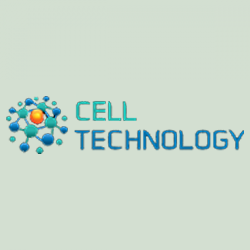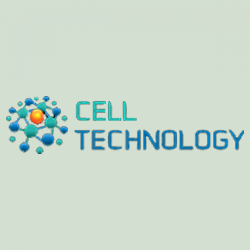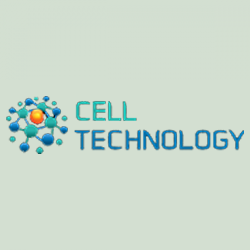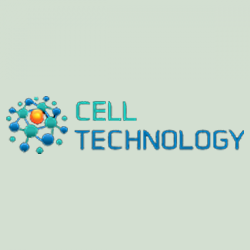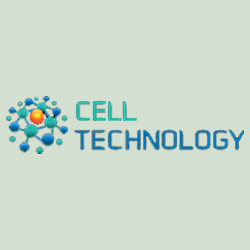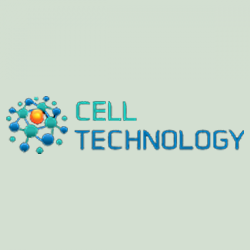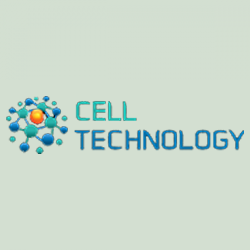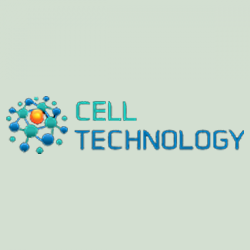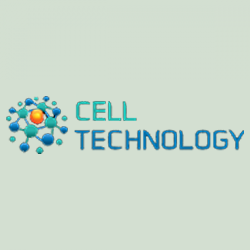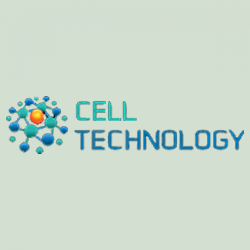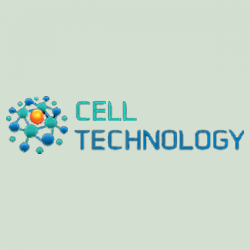Sem produtos
CELL TECHNOLOGY
-
Reagentes
- TOCRIS
- BIOTIUM
- CLOUD CLONE
- FINETEST
- KPL
- Bioer Kits PCR
- INNOVATIVE RESEARCH
- CYANAGEN
- ATLAS ANTIBODIES
- ABNOVA
- SAFE Substitutes to EtBr
- SAFE Real Time PCR dyes
- CYTOSKELETON
- BACHEM
- IMMUNOSTAR
- CELL TECHNOLOGY
- BIOWORLD
- ABBEXA
- ELK Biotechnology
- AVIVA Systems Biology
- MAGNAMEDICS Separação Magnética
- MAGNAMEDICS
- BIOMIGA
- CMA Microdiálise
- BIOPREMIER
- Substitutos para EtBr
- REACTIVOS ASTORI
-
Instrumentos
- Agitadores /Agit. com incubação
- Alimentação /Crioscópios /Osmômetros
- Sistemas automáticos
- Balanças /Autoclaves /pHs
- Bombas de Seringa /Peristálticas etc
- Bombas Peristálticas
- Bombas Pulsátil/ Centrífugas
- Banhos /Chillers /Termobloco
-
Centrífugas
- Microcentrífugas
- Minicentrífugas Vórtex
- Centrífugas Básicas
- Centrífugas Universais
- Supercentrífugas
- Rotores y accesorios para Microcentrifugas
- Rotores para Centrífugas Vórtex/Especias
- Rotores, Acessórios para centrífugas NUVE-NF400/R, NF800/R, NF1200/R
- Rotores para centrífuga ELMI CM7S-PLUS
- Rotores, Acessórios para MPW-54
- Rotores, Acessórios para MPW-55
- Rotores, Acessórios para MPW-56
- Rotores, Acessórios para MPW-150R
- Rotores, Acessórios para Centrífugas MPW-102M Universal e MPW-260, MPW-260R e MPW-260RH
- Rotores e Acessórios para centrífugas MPW-102 Science e DiagnosticMPW 102M Universal - Rotores e Acessórios
- Rotores, Acessórios para centrífuga MPW-351E
- Rotores, Acessórios para centrífugas MPW-352,352R, 352RH
- Rotores, Acessórios para centrífugas MPW-380/380R
- Cytoset Para MPW-102MS/ 102MU/ 102MD/ 352/ 352R/ 352RH
- Cabinas / Câmaras
- Culturas de células
- Detetores de Radioatividade
- Espectrofotômetro
- Estufas/ Incubadoras / Câmaras
- Equipamentos para Microplacas
- Congeladores/ Armazenamento de Amostras
- Fermentadores
- Homogeneizadores
- Leitores de Tubos
- Manejo Liquidos
- Microbiologia
- Microscopia
-
Instr. Experimentação Animal
- Sistemas Estereotaxia
- Anestesia / Respiradores
- Dor / Inflamação / Hiperalgesia
- Coordenação Motora / Atividade
- Metabolismo / Comportamento Alimentário
- Conduta / Condicionamento / Labirintos
- Analisadores de O2 / CO2
- Mostrador Automático de Sangue
- Eletrofisiologia
- Analisadores de Composição Animal
- Sistemas Animais Acordados
- Bombas Osmóticas Implantáveis RWD
- Histologia
- Microdiálise
- Purificação da água
- Ultrassons
- Bombas de Vácuo/Pressão
- PROCESAMIENTO TISULAR
- Concentracion de Muestras en Viales y Microplacas
- Documentacion de Geles y Western, Equipos Imagen
- Electroforesis
- Lamparas UV, Cabinas Visión UV, Crosslinkers, Proteccion UV
- PCR y PCR Cuantitativa
- Analizador Oxido Nitrico
-
Consumíveis
- PCR, Tubos Y Placas
- Microplacas / Fluo / Lum / Abs
- Microtubos
- Extracción en Fase Solida
- Pontas Pipetas
- Tubos / Tubos Centrífuga
- Tubos / Frascos Ultra / Supercentrífuga
- Tubos / Frascos de Cultivo
- Cuvetes Espectrofotômetro
- Vials leitura de luminescência
- Cons. Experimentação Animal
- Consumibles Congelacion
- Placas Co-Cultivo
- Downloads
- Produtos estrela
A Cell Technology foi fundada em 1998 para fornecer soluções para pesquisas acadêmicas, biotecnológicas e farmacêuticas. Seu objetivo é desenvolver ensaios exclusivos que permitam aos pesquisadores estudar as funções celulares usando reagentes que penetram na membrana celular. Este processo permite a detecção in situ de eventos celulares ou teci...
A Cell Technology foi fundada em 1998 para fornecer soluções para pesquisas acadêmicas, biotecnológicas e farmacêuticas. Seu objetivo é desenvolver ensaios exclusivos que permitam aos pesquisadores estudar as funções celulares usando reagentes que penetram na membrana celular. Este processo permite a detecção in situ de eventos celulares ou teciduais específicos, garantindo a manutenção da morfologia e arquitetura. Seu primeiro lançamento foi uma linha de produtos que deteta células apoptóticas por meio da medição de caspases ativas e perda de potencial de membrana mitocondrial. Seu catálogo foi ampliado com produtos de deteção de caspases altamente específicos, bem como para a deteção de produtos de catepsina e produtos de ELISA. A Cell Technology continuará a expandir-se com produtos com o compromisso de desenvolver reagentes exclusivos de alta tecnologia.
CELL TECHNOLOGY There are 51 products.
-
Hydrogen Peroxide Detection/Peroxidase Detection Kit
A rapid, no-wash assay to measure H2O2, based on the formation of a fluorescent product. The kit can measure H2O2 release from cells or enzyme coupled reactions. It can also measure peroxidase activity.
-
Fluorescent Lactate Detection Kit
This kit provides a reliable, sensitive fluorometric method for the quantification of lactate in biological samples such as serum, plasma, urine, and tissue extracts. The assay plate can be incubated and read in 15-30 min.
-
Dual Poly Caspase and Mitochondrial Membrane Potential Assay Kit
This kit utilizes a cell permeable two-color stain to simultaneously detect caspase activity and mitochondrial membrane potential (MMP) in cells. Active caspases are detected with the poly caspase probe FAM-VAD-FMK and MMP with a cationic dye.
-
Apo Active FITC - Caspase 3 Detection Kit
This kit is highly specific for active human and murine enzyme. The kit utilizes a rabbit affinity purified polyclonal antibody against aa 163-175 of murine caspase 3. Visualization of fixed samples is via a FITC-labeled goat anti-rabbit antibody.
-
Apo 3/7 HTS Assay Kit
A homogenous fluorescent assay that utilizes the quenched (z-DEVD)2-R110 peptide substrate for caspase 3/7 detection. The assay can be used for high throughput screening
-
Mito Flow - Mitochondrial membrane potential detection kit
Flo200-2 is an easy to use kit which measures mitochondrial membrane potential using flow cytometry. Useful for analysing both suspension and monolayer adherent cell lines.
-
Chlorination and Oxidation detection Kit
Can monitor multiple time points to follow kinetics., One-step, no wash assay., Adaptable for High Throughput format., Highly Sensitive.
-
Fluorescent Cell Proliferation Assay
An oxidation/reduction-based reagent quantitatively measures the reducing power of living cells. The cell-permeable reagent is blue in color, but non-fluorescent. When reduced by viable cells, it fluoresces red. Read in a fluorescent plate reader.
-
Fluorescent ATP Detection Kit
ICT’s Fluoro ATP assay provides a reliable, sensitive fluorimetric assay for the quantification of ATP in biological samples., Detection of ATP in cells or tissue extracts., Detection of ATP in cell death, energy metabolism, mitochondria function., ATP measurement in ATP consuming enzymes such as Kinases and ATPases., ATP detection in Bacterial, Fungal...
-
Fluorescent Semicarbazide-Sensitive Amine Oxidase Detection Kit
This kit utilizes a non-fluorescent detection reagent to measure H2O2 released from the conversion of benzylamine to benzaldehyde via Semicarbazide-Sensitive Amine Oxidase. H2O2 then oxidizes the detection reagent to produce a fluorescent product.
-
Fluorescent Phosphate Detection Kit
This kit provides a simple, one-step fluorometric or colorimetric method for determination of phosphate in serum and plasma samples. The assay is based on an enzyme-coupled reaction that detects inorganic phosphate.
-
Ultra Pure ADP
Commercially available ADP is contaminated with trace amounts of ATP. In bioluminescence assays this trace ATP contamination results in high backgrounds and reduces assay sensitivity. , ICT's ADP is purified to remove these trace ATP contaminants and as a result produces ADP that is greater than 99.9% pure.

